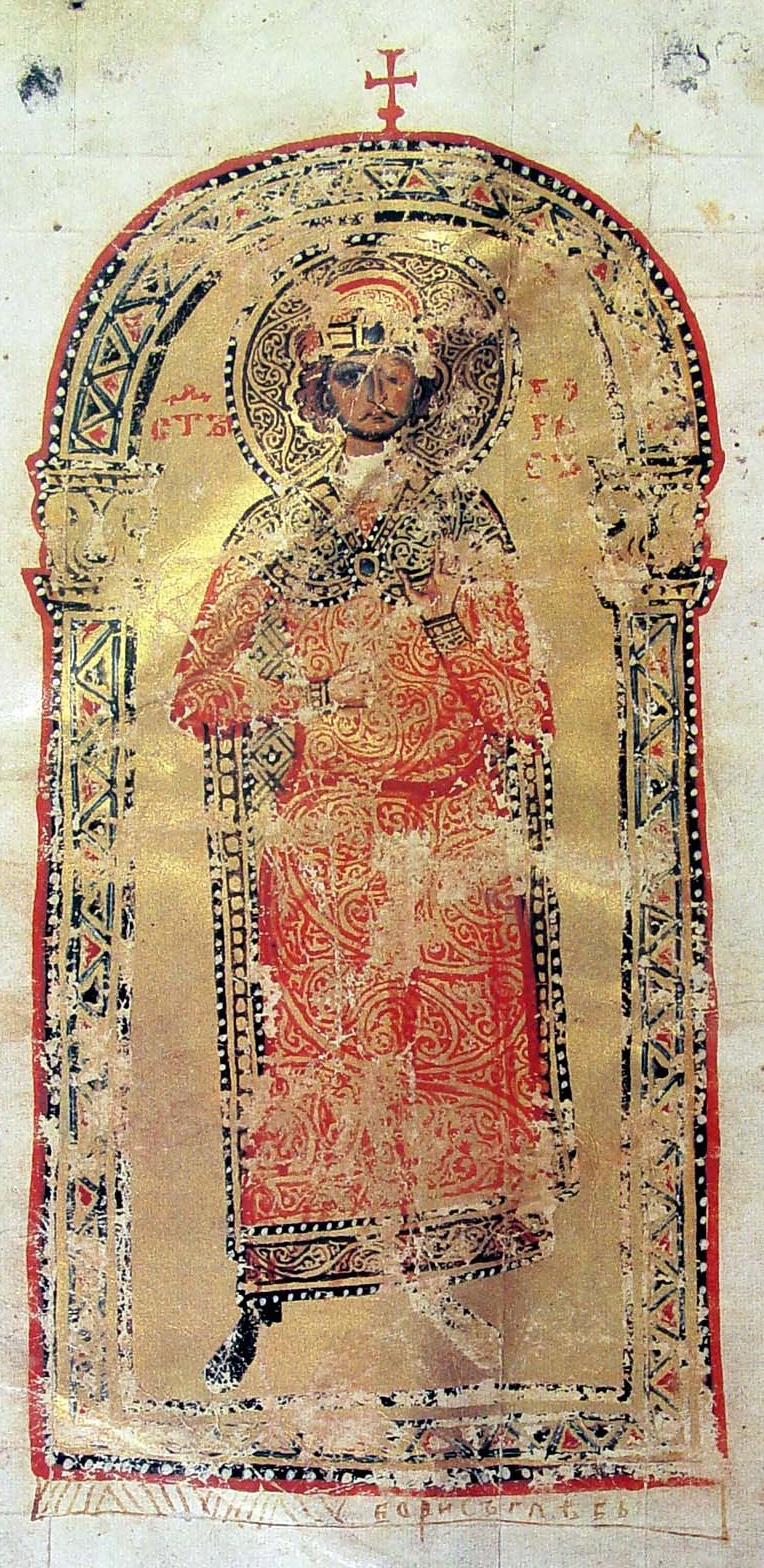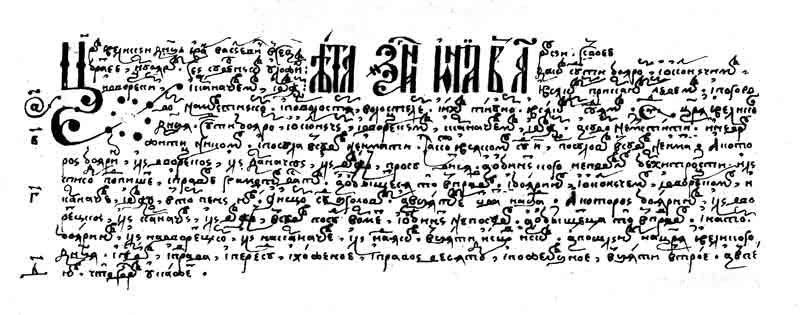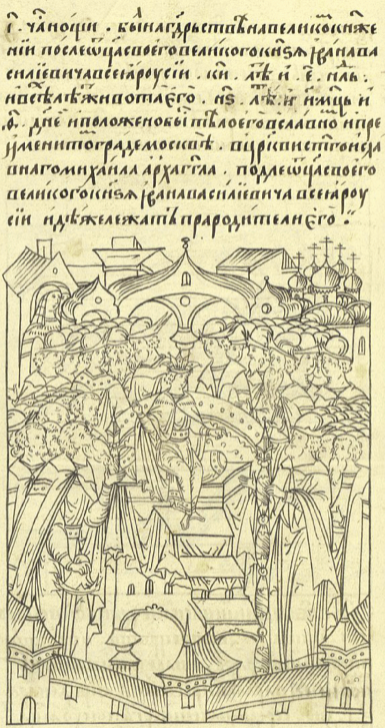|
Votchina
A ''votchina'' ( , ) or ''otchina'' ( – from the word for ''father'') was a land estate that could be inherited. The term ''votchina'' was also used to describe the lands of a prince (''knyaz''). The system disappeared in Russia largely due to reforms in the 18th-century. Terminology In medieval sources, noble landowners and princes would often refer to a ''votchina'' or ''otchina'' in connection to their own lands. The term ''votchina'' is now generally used in Russian historical terminology in reference to the main form of feudal landownership. From the 15th century, there were two legally distinct forms of land that could be owned by Russian nobles: a ''votchina'' (hereditary land) and ''pomestye'' (service land). Service lands were given on condition of service, and so it reverted to the state upon the owner's death, while hereditary lands were considered to be family property. However, by the 16th century, it was common for sons or nephews to take over service land when th ... [...More Info...] [...Related Items...] OR: [Wikipedia] [Google] [Baidu] |
Estate (house)
An estate is a large parcel of land under single ownership, which generates income for its owner. British context In the United Kingdom, historically an estate comprises the houses, outbuildings, supporting farmland, tenanted buildings, and natural resources (such as woodland) that surround the gardens and grounds of a very large property, such as a country house, mansion, palace or castle. It is the modern term for a manor, but lacks a manor's now-abolished jurisdiction. Country house estate The "estate" formed an economic system where the profits from its produce and rents (of housing or agricultural land) sustained the main household, formerly known as the manor house. Thus, "the estate" may refer to all other cottages and villages in the same ownership as the mansion itself, covering more than one former manor. Examples of such great estates are Woburn Abbey in Bedfordshire, England, and Blenheim Palace, in Oxfordshire, England, built to replace the former manor hou ... [...More Info...] [...Related Items...] OR: [Wikipedia] [Google] [Baidu] |
Knyaz
A , also , ''knjaz'' or (), is a historical Slavs, Slavic title, used both as a royal and noble title in different times. It is usually translated into English language, English as 'prince', 'king' or 'duke', depending on specific historical context and the potentially known Latin equivalents at the time; the word was originally derived from the Proto-Germanic language, common Germanic ('king'). Feminine forms of the word may be divided into two groups: * "Princess", be it princess consort (wife of a reigning prince), princess regnant (reigning princess ''suo jure''), or princess regent (reigning on behalf of an underage prince, usually her son after her husband's death) ** Belarusian language, Belarusian: ''kniahinia'' (княгіня) ** Bulgarian language, Bulgarian and Russian language, Russian: () ** Slovene language, Slovene, Serbo-Croatian, and Macedonian language, Macedonian: (in Serbian Cyrillic alphabet, Serbian and Macedonian alphabet, Macedonian Cyrillic: ) ** ... [...More Info...] [...Related Items...] OR: [Wikipedia] [Google] [Baidu] |
Sobornoye Ulozheniye
The ''Sobornoye Ulozheniye'' (, ) was a legal code promulgated in 1649 by the Zemsky Sobor under Alexis of Russia as a replacement for the Sudebnik of 1550 introduced by Ivan IV of Russia. The code survived well into the 19th century (up to 1832), when its articles were revised under the direction of Mikhail Speransky. The code consolidated Russia's slaves and free peasants into a new serf class and pronounced class hereditary as unchangeable (see Russian serfdom). The new code prohibited travel between towns without an internal passport. The Russian nobility agreed to serve in the army, but were granted the exclusive privilege of owning serfs. The law code conceded many demands that were raised in the preceding decades, it satisfied the nobility's demand to retrieve runaway serfs without a time-limit, and which allowed the 'serf bondage to the soil' to later evolve into a far more comprehensive serfdom system in the 18th century. Further, the code also forbade ''boyars'' in a ... [...More Info...] [...Related Items...] OR: [Wikipedia] [Google] [Baidu] |
Kievan Rus'
Kievan Rus', also known as Kyivan Rus,. * was the first East Slavs, East Slavic state and later an amalgam of principalities in Eastern Europe from the late 9th to the mid-13th century.John Channon & Robert Hudson, ''Penguin Historical Atlas of Russia'' (Penguin, 1995), p.14–16. Encompassing a variety of polities and peoples, including East Slavs, East Slavic, Norsemen, Norse, and Finnic peoples, Finnic, it was ruled by the Rurik dynasty, founded by the Varangians, Varangian prince Rurik.Kievan Rus , Encyclopædia Britannica Online. The name was coined by Russian historians in the 19th century to describe the period when Kiev was preeminent. At its greatest extent in the mid-11th century, Kievan Rus' stretched from the White Sea in the north to the Black Sea in the south and from the River source, headwaters of the ... [...More Info...] [...Related Items...] OR: [Wikipedia] [Google] [Baidu] |
Serfdom
Serfdom was the status of many peasants under feudalism, specifically relating to manorialism and similar systems. It was a condition of debt bondage and indentured servitude with similarities to and differences from slavery. It developed during late antiquity and the Early Middle Ages in Europe and lasted in some countries until the mid-19th century. Unlike slaves, serfs could not be bought, sold, or traded individually, though they could, depending on the area, be sold together with land. Actual slaves, such as the kholops in Russia, could, by contrast, be traded like regular slaves, abused with no rights over their own bodies, could not leave the land they were bound to, and marry only with their lord's permission. Serfs who occupied a plot of land were required to work for the lord of the manor who owned that land. In return, they were entitled to protection, justice, and the right to cultivate certain fields within the manor to maintain their own subsistence. Serfs wer ... [...More Info...] [...Related Items...] OR: [Wikipedia] [Google] [Baidu] |
George's Day In Autumn
George's Day in Autumn, or Saint George's Day, is one of two feasts of Saint George, celebrated by the Russian Orthodox Church (26 November Julian Calendar, equivalent to 9 December Gregorian from 1900 to 2099), the Serbian Orthodox Church (3 November Julian Calendar, equivalent to 16 November Gregorian from 1900 to 2099), and the Georgian Orthodox Church (10 November Julian Calendar, equivalent to 23 November Gregorian from 1900 to 2099), the other being Saint George's Day of Spring (23 April Julian, equivalent to 6 May in the Gregorian calendar from 1900 to 2099). Yuri's Day in the Autumn, celebrated after the end of the agricultural year and the gathering of the harvest, had a special significance on the calendar of Russian peasants during the centuries when the system of Russian serfdom was becoming established. The '' Sudebnik'' of 1497 defined the two weeks' period around the Autumn Yuri's Day (one week before the feast and one week after it), as the only time of the ... [...More Info...] [...Related Items...] OR: [Wikipedia] [Google] [Baidu] |
Prikaz
A prikaz (; , plural: ) was an administrative, judicial, territorial, or executive bureaucracy , office functioning on behalf of palace, civil, military, or church authorities in the Grand Duchy of Moscow and the Tsardom of Russia from the 15th to the 18th centuries. The term usually suggests the functionality of a modern "ministry (government department), ministry", "office", "department", or "bureau"; however, in practice ''prikaz'' was historically applied to most governmental organizations regardless of their function or authority. In modern Russian, wikt:приказ, ''prikaz'' literally means an 'order' in the meaning of 'directive' or 'command'. Most of the ''prikazy'' were subordinated to the boyar duma. Some of them, palace ''prikazy'' (), were subordinated to the or , which answered directly to the tsar of Russia. The patriarch of Moscow and all Rus' had his own ''prikazy''. History Originally, ''prikazy'' were created by private orders given by the tsar to a certain ... [...More Info...] [...Related Items...] OR: [Wikipedia] [Google] [Baidu] |
Sudebnik Of 1550
The Sudebnik of 1550 (), also known as the Sudebnik of Ivan IV (), was an expansion and revision of the Sudebnik of 1497 by Ivan IV of Russia, a code of laws originally instituted by Ivan III, his grandfather. It is considered the result of the first Russian parliament of feudal estates (Zemsky Sobor The ''Zemsky Sobor'' ( rus, зе́мский собо́р, p=ˈzʲemskʲɪj sɐˈbor, t=assembly of the land) was a parliament of the Tsardom of Russia's estates of the realm active during the 16th and 17th centuries. The assembly represented ...). The Sudebnik of 1550 liquidated the aristocracy's judicial privileges and strengthened the role of state judicial bodies. The Sudebnik also provided for the active participation of the elective representatives of local communities (rural heads, jurymen, ''tselovalniki'', ''dvorskie'' etc.) in legal proceedings. The arrest of suspects could be made only at the consent of the local community. The representative of a community (''dyak ... [...More Info...] [...Related Items...] OR: [Wikipedia] [Google] [Baidu] |
Ivan The Terrible
Ivan IV Vasilyevich (; – ), commonly known as Ivan the Terrible,; ; monastic name: Jonah. was Grand Prince of Moscow, Grand Prince of Moscow and all Russia from 1533 to 1547, and the first Tsar of all Russia, Tsar and Grand Prince of all Russia from 1547 until his death in 1584. Ivan's reign was characterised by Russia's transformation from a medieval state to a fledgling empire, but at an immense cost to its people and long-term economy. Ivan IV was the eldest son of Vasili III of Russia, Vasili III by his second wife Elena Glinskaya, and a grandson of Ivan III of Russia, Ivan III. He succeeded his father after his death, when he was three years old. A group of reformers united around the young Ivan, crowning him as tsar in 1547 at the age of 16. In the early years of his reign, Ivan ruled with the group of reformers known as the Chosen Council and established the ''Zemsky Sobor'', a new assembly convened by the tsar. He also revised the Sudebnik of 1550, legal code and in ... [...More Info...] [...Related Items...] OR: [Wikipedia] [Google] [Baidu] |
Alexis Of Russia
Alexei Mikhailovich (, ; – ), also known as Alexis, was Tsar of all Russia from 1645 until his death in 1676. He was the second Russian tsar from the House of Romanov. He was the first tsar to sign laws on his own authority and his council passed the ''Sobornoye Ulozheniye'' of 1649, which strengthened the bonds between autocracy and the lower nobility. In religious matters, he sided closely with Patriarch Nikon of Moscow, Patriarch Nikon during the Schism of the Russian Church, schism in the Russian Orthodox Church which saw unpopular liturgical reforms. While finding success in foreign affairs, his reign saw several wars with Russo-Persian War (1651–1653), Iran, Russo-Polish War (1654–1667), Poland (from whom left-bank Ukraine and Smolensk Voivodeship, Smolensk were annexed) and Russo-Swedish War (1656–1658), Sweden, as well as internal instabilities such as the Salt Riot in Moscow and the Cossack revolt of Stenka Razin in southern Russia. At the time of his death, R ... [...More Info...] [...Related Items...] OR: [Wikipedia] [Google] [Baidu] |
Boyar Scions
Boyar scions (Russian: дети боярские, сыны боярские; transliteration: ''deti/syny boyarskie'') were a rank of Russian gentry that existed from the late 1300s through the 1600s. In the late 1700s—early 1800s descendants of the ''boyar scions'' who failed to prove nobility or regain it through the Table of Ranks were enrolled within the social group named '' odnodvortsy''. Origins ''Boyar scions'' is one of the most controversial social categories in Russian history. They are the subject of two contradicting trends: some historians hold that the Boyar scions are genealogically connected with boyars, while the others claimed they were nothing else but randomly recruited low-ranked servicemen. For example, these completely opposite positions on the subject-matter were held in the 18th century by General and Prince Mikhail Scherbatov. Boltin claimed boyar scions were merely servants of boyars, while Prince Scherbatov insisted they were actually descendants ... [...More Info...] [...Related Items...] OR: [Wikipedia] [Google] [Baidu] |






